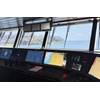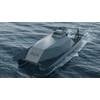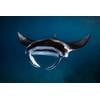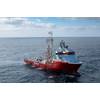Subsea Vessel Operations Driven by Growth in Deep Water
Developments and Increased Operator Confidence
DW forecast that approximately $77b will be spent on subsea vessel operations in field development, inspection, repair & maintenance (IRM) and subsea well intervention between 2012 and 2016. This is an increase of 63% over the preceding five-year period. Global vessel demand for these markets is expected to increase 33% on the previous five-years.
Global vessel expenditure grew from $8.7bn in 2007 to over $10bn in 2009 before dipping in 2010. During this period vessel contractors were largely protected from the financial crisis which strongly impacted some other sectors and were able to work off their backlog.
Subsea Vessel Operations
The latest edition of Douglas-Westwood’s World Subsea Vessel Operations Market Forecast considers three main areas of activity: Field Development, IRM and Subsea Well Intervention.
Field Development:
Tasks carried out by vessels which can lift and install offshore and subsea infrastructure for new developments or connect additional subsea equipment to an existing production facility. The field development market is expected to see strong growth from 2012 onwards with vessel day demand totaling an estimated nearly 150,000 days with $4.2bn of expenditure over the forecast period. The sector suffered a slight decrease in activity between 2008 and 2010, as operators stalled projects due to the economic crisis. 2012 will mark the first year of growth after this period as confidence returns to the market and operators drive delayed projects into the installation phase. Future demand will be driven by developments in deeper waters. Oil majors have an urgent requirement to renew reserves to keep up with growing global demand for oil and gas and the largest prospects lie in deep water.
IRM:
Tasks carried out on offshore infrastructure below the water line in order to maintain production and ensure suitable HSE standards are met. Total demand for IRM vessel activity grew by 19% between 2007 and 2011 and expenditure reached $4.5bn in 2011 which represents nearly 28,000 vessel days. This continuing upward trend is being driven by the growing installed infrastructure base and is forecast to be worth $7.5bn by 2016.
Subsea well intervention:
Is an umbrella term for a number of distinct tasks which are designed to maintain structural integrity of wells or increase production. The use of intervention vessels will grow due to substantial cost savings over using rigs. From 2012 onwards the demand for riserless and rigless intervention vessels will increase dramatically. The vessel demand forecast over the period 2012-2016 is expected to total an estimated 23,000 days; an increase of over 130% compared to the previous five year period. This demand growth is driven by the realization of large cost savings possible through the use of intervention vessels and the subsequent increased adoption of the technology.
Subsea Vessel Supply
The last five years have seen an increase in the number of newbuilds entering the subsea vessel market. In the present build cycle subsea vessel numbers increased by over 70% and some types are now in oversupply, but availability of some others is extremely low. In some regions this is driving artificially high vessel day rates and an operator preference for highly versatile multipurpose vessels capable of covering a range of work scopes.
Vessel Contractor Competition
The market for vessel contractors is highly fragmented. DW has identified nearly 450 vessels from over 80 different contractors. While there has been some consolidation in the industry with the Subsea7/Acergy merger, the vessel market is comprised of a significant number of international vessel contractors and smaller regional players. The industry possesses high barriers to entry. New competitors face the challenges of the complex nature of project execution involved in offshore developments, the requirement for highly skilled employees and limited access to cheap newbuild financing options.
Market Forecast
DW forecast strong growth over the next five years with annual subsea vessel operations expenditure set to rise from $11.3bn in 2012 to $20.3bn by 2016. This growth is a result of confidence returning to the subsea industry, a move towards deep water in underdeveloped regions and ultra deep in some already developed, and the subsequent increased demand for higher specification vessels over increased operational timescales.
Conclusions
The nature of the offshore industry has evolved dramatically over the past 10 years with deepwater accounting for 24% of activity in 2011 compared to 6% in 2000. This trend has driven an evolution in the types of vessels required by the industry to support offshore field developments with cranes, deck spaces & dynamic positioning systems increasing in size, complexity and efficiency. The general outlook for the subsea vessels market shows long term growth potential and a very sizable business opportunity. Despite this, the market will retain its long-term cyclicality as vessel owners over-react to the upcycles. The best vessels will, however, always find a market and niche-players will continue to thrive in any downturn.
About the Author
Joseph Corrigan sits within Douglas-Westwood’s Research team where his principal activities include quantitative analytics and macro-economic analysis, competitive analysis and supply chain mapping. Industry areas of focus most recently include Subsea Vessels, Offshore Field Development, IRM & Well Intervention, and Subsea Diving Systems. Corrigan is a graduate of the University of Cambridge and has a Masters degree in Chemical Engineering.
About the Report
The new second edition of The World Subsea Vessel Operations Market Forecast 2012-2016 analyzes the main factors that are driving demand for ROVSV, DSV, Flexlay, LWIV and Pipelay Vessels and provides supporting information analysing each key sector. The report builds on the success of the first edition to include a comprehensive supply-side competitive landscape with major players and their fleets, segmented by vessel type, day-rate analysis and geographic focus:
Report details:
http://www.douglas-westwood.com/shop/shop-infopage.php?longref=1022~0
(As published in the November/December 2012 edition of Marine Technology Reporter - www.marinetechnologynews.com)













 August 2025
August 2025



